In our column, Through Her Looking Glass_, we try to decode iconic films from a female perspective. The series will attempt to understand the agency each female character holds in the film’s narrative (mostly, from a contemporary standpoint) and whether the purported meaning of the film alters under such a viewing._ * Why The Devil Wears Prada? Growing up, The Devil Wears Prada was one of my absolute favourite films that I went back to, time and again, whenever I felt down or grumpy. It had two women at its centre, navigating life and career, while exuding oodles of sass and glamour of high fashion. With Chanel boots, Calvin Klein bags and Shu Uemura eyelash curlers, The Devil Wears Prada made a case for the vicarious consumption of expensive finery that most third-world country residents only get to witness from behind frosty glass windows. There was one thing though, that always stuck out to me as odd. Why did Andrea Sachs go back to her boyfriend in the end? Years later, as I sat down to rewatch the film, I realised there were a lot of red signals that my prepubescent romantic self deftly disregarded in a desperate attempt to feel content for our heroine’s happily-ever-after. Now that the rose-tinted glasses have come off (or so I hope), I’m embarking on a journey to examine whether this cult classic is indeed the shining beacon of feminism that it is alleged to be. ** The Devil Wears Prada, based on Lauren Weisberger’s 2003 novel of the same name, had all the ingredients for the making of a commercial hit. It cast Meryl Streep and Anne Hathaway, two of the Hollywood’s most bankable stars of the decade, and placed them at the heart of all the New York-y razzmatazz. Understandably, the film grossed over $300 million globally and was the 12th highest-grossing film worldwide in 2006. Critics lauded its “witty expose of New York’s fashion scene” (“I’m just one stomach flu away from my goal weight”) and conversely, its clever vindication of this kingdom of couture that determines the choices and aspirations of women all over the world. In what is regarded as one of the best monologues in the film, protagonist Miranda Priestly (Meryl Streep) remarks how the “wretched Cerulean blue sweater” her reluctant underling Andrea Sachs (Anne Hathaway) bought at some “tragic Casual Corner” was a result of the trickle-down effect, that began at one of the Runway offices. The film follows a naive Northwestern University graduate, Andrea ‘Andy’ Sachs, who lands a job at the prestigious Runway magazine, as the second personal assistant to editor-in-chief Miranda Priestly. The rest of the film recounts Andy’s one-year servitude to the job a million girls would “kill for.” [caption id=“attachment_8899391” align=“alignnone” width=“640”] 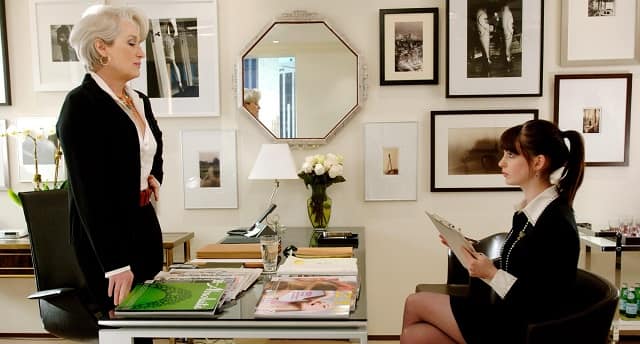 Meryl Steep as Miranda Priestly and Anne Hathaway as Andrea Sachs[/caption] Despite its glossy packaging, The Devil Wears Prada is not without its share of issues. Priestly has come to signify the archetypal anti-heroine who is unapologetically condescending, inconsiderate, hails skin-deep beauty (“I told myself, take a chance, hire the smart, fat girl”), abuses her authority to illtreat employees, and uses the loyalty of trusted aides for her own benefit. Why Miranda never becomes a full-blown antagonist, then, is because of the actor behind the role. Streep imbues Miranda with such authenticity that even when her defenses crumble apart, and she breaks down, it does not seem uncharacteristic of her. She is devastated when her husband files for divorce. “Another divorce splashed across Page Six. I can just imagine what they’re going to write about me. The Dragon Lady. Career-obsessed. Snow Queen drives away another Mr Priestly.” 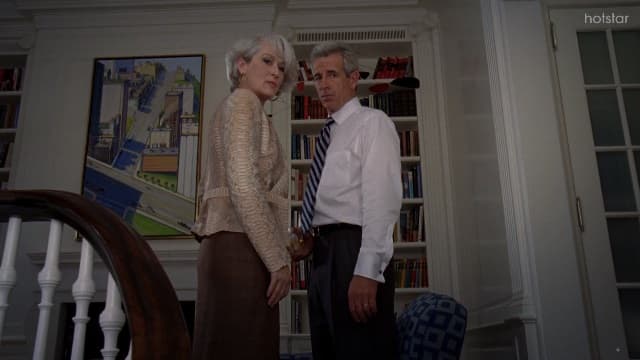 But what affects her more than herself becoming a subject of speculation is how her daughters would perceive “another father. Figure. Gone.” Such moments of tenderness towards her children, when she pulls all stops to attend their recital, or when she makes Andy procure a copy of the unpublished Harry Potter manuscript, are far and few in number, but they provide an insight into Miranda beyond her steely exterior. She’s as much a protective mother as one who’d make peanut butter sandwiches for her child’s soccer game, but The Devil Wears Prada chooses to spotlight her ambitious and clinical nature. What reigns it in is Streep’s insistence on portraying Miranda’s defenselessness, making her more human. To deepen the chasm between the personal life and career of a woman, both Andy and Miranda are shown having trouble reconciling the two throughout the film. Miranda is perpetually deemed to be the “bad wife” for prioritising her office meetings over her time with her husband. It is through her that director David Frankel establishes the conundrum that women with burgeoning careers often face — to display or to not display vulnerability. In response to the question of why Meryl Streep chose to become involved in the film that could potentially end up perpetuating harmful stereotypes, the actress had responded, “I wanted to know why we vilify women in powerful positions, I wanted to understand the pressures on such a woman." In order for women to establish their agency in roles traditionally occupied by men, they needed to unsex themselves like Lady Macbeth. Hence, Miranda guards her personal life and her failing marriage like a hawk, lest she be deemed a creature of sentiment, unfit for her position. However, by making Miranda a product of socially dictated gender roles, the titular “devil” in The Devil Wears Prada ends up reaffirming stereotypes. [caption id=“attachment_8899401” align=“alignnone” width=“640”] 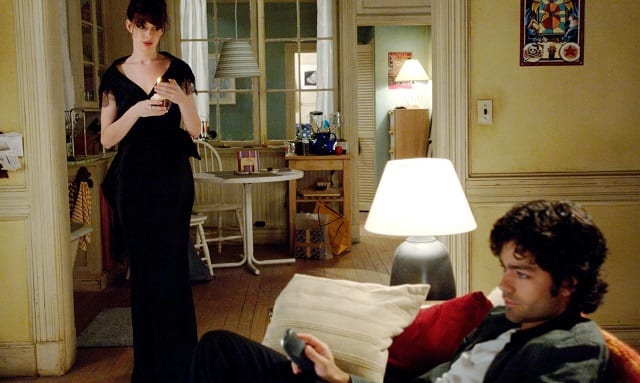 Nate gets angry with Andy for missing his birthday for a professional commitment[/caption] On the other hand, Andy and her boyfriend Nate (Adrian Grenier), are in a comfortable place in their relationship at the beginning of the film, but as her work becomes more demanding, Nate becomes increasingly scornful of her profession. He scoffs at Andy for not quitting her job when shit hits the fan and gets upset with her when she misses his birthday for a professional commitment. But Nate is not just an insecure boyfriend, he is judgemental, toxic, and repulsive too. When Andy excitedly tells her friends she has scored a job at a fashion magazine, Nate incredulously utters, “What was it, a phone interview?”. He looks down upon women who desire fancy purses, because he is unable to gauge why “women need so many bags anyway.” He even gaslights her into believing that it is Andy who is straying from her “nice-girl” values and selling her soul, and his anger is just a byproduct of his concern for her. “I wouldn’t care if you were out there pole-dancing all night, as long as you did it with a little integrity,” he says, but he also goes on to add that Andy is becoming more like “those Runway girls she used to make fun of.” Although eventually, Andy quits her Runway job to pursue her journalistic passion, the movie’s denouement of reconciling Andy with Nate dilutes his obnoxiousness and drives the point home that Nate was right all along. [caption id=“attachment_8899411” align=“alignnone” width=“640”] 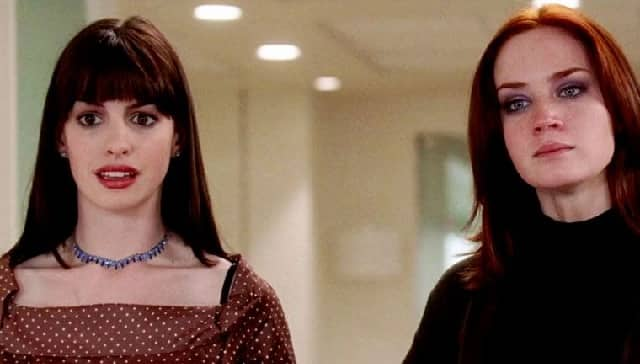 The film pits Emily (right) and Andy against each other — playing on the classic women-against-women trope[/caption] Further, for a film led by women, The Devil Wears Prada woefully fails at depicting sisterhood. Even though the film derives much of its wry humour through exchanges between Miranda’s other minion, Emily Charlton (Emily Blunt), and Andy, it also plays on the classic women-against-women trope and establishes that Andy has no female allies at work. Emily is hostile towards her, dismissive of her sartorial choices, and shuts her down when she tries to open up about her workplace agony. The only person who is invested in her, without an agenda of his own, is Nigel (Stanley Tucci). On Nigel’s advice, Andy makes a genuine effort to embrace the world she is in and literally dresses the part, which eventually leads Miranda to take notice of Andy’s unrelenting efforts to impress her. Its warped feminism and a fair share of missteps notwithstanding, The Devil Wears Prada was a trailblazer in its own right. Unlike Mean Girls two years before, The Devil Wears Prada passed the Bechdel test and exposed internalised misogyny, societal and gender expectations of the beauty industry, even if it did not confront it head-on.
Despite having two women at its centre, The Devil Wears Prada ended up reaffirming and perpetuating harmful gender stereotypes for the most part.
Advertisement
End of Article
Written by Pratishruti Ganguly
Square peg in a round hole (or something else that's equally cliché), bad punner and worse poetess see more


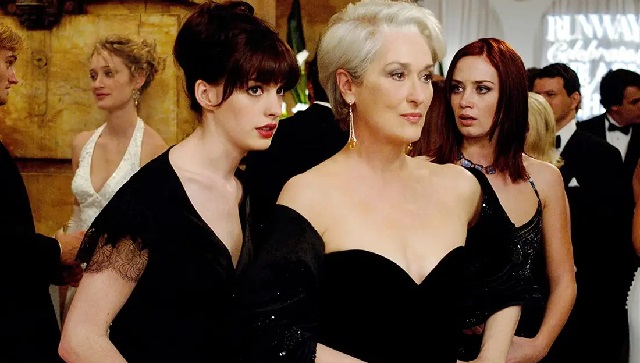)
)
)
)
)
)
)
)
)



